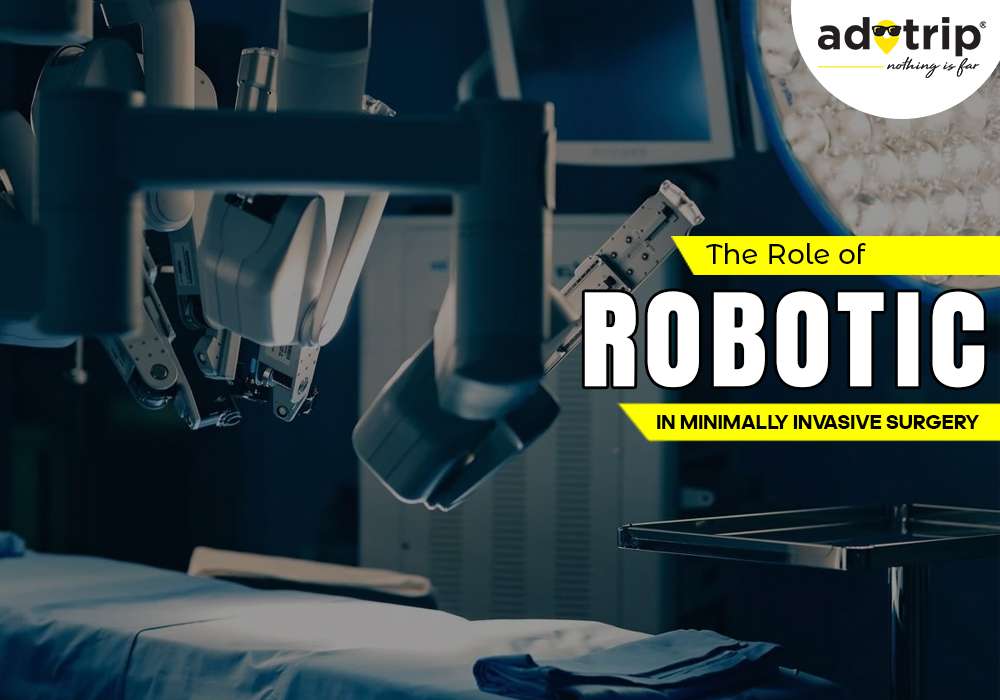
Have you ever wondered how surgeons perform complex surgeries with such precision and accuracy without causing too much damage to the surrounding tissues? The answer lies in the use of robotics in minimally invasive surgery.
Recently, a significant shift has been toward minimally invasive surgery, which involves performing procedures through small incisions using specialised instruments and cameras. This approach offers numerous benefits, including shorter recovery times, less pain, and reduced scarring. However, it requires high skill and precision, which can be challenging for even the most experienced surgeons.
This is where robotics comes in. Robotic-assisted surgery has revolutionised minimally invasive surgery, enabling surgeons to perform complex procedures with greater accuracy and control. In this article, we will explore the role of robotics in minimally invasive surgery and how it is changing how we approach surgical procedures.
Robotics in surgery refers to using robotic technology to assist surgeons during surgical procedures. This technology enables surgeons to perform precise and complex procedures with greater accuracy and control, resulting in better patient outcomes. The robotic system typically consists of a console where the surgeon sits and controls the robotic arms and instruments inserted into the patient's body through small incisions.
The system provides the surgeon with a 3D view of the surgical site and allows for more precise movements of the instruments. Robotics in surgery is used in various procedures, including prostate surgery, hysterectomy, and heart surgery, among others. The use of robotics in surgery has many benefits, including shorter hospital stays, faster recovery times, and reduced risk of complications.
Robotic technology has revolutionised the field of minimally invasive surgery by allowing for greater precision, control, and visualisation during procedures. Here are some ways in which robotics is used in minimally invasive surgery:
Overall, robotics has significantly improved the field of minimally invasive surgery, allowing for greater precision, control, and visualisation during procedures. This has improved patient outcomes, with less pain, scarring, and downtime after surgery.
Also read about more: Training For Robotic Surgery: What It Takes To Be A Robotic Surgeon
In conclusion, robotics has played a significant role in advancing minimally invasive surgery. Robotic systems allow surgeons to perform complex procedures with greater precision, accuracy, and control. The benefits of robotics in surgery include reduced pain and scarring, shorter hospital stays, and faster patient recovery times. Additionally, robotic surgery can improve patient outcomes and reduce healthcare costs. As technology continues to evolve, we can expect to see even more advancements in robotics that will further enhance the practice of minimally invasive surgery.
With India fast becoming a hub of medical facilities, many people choose the country to get the best treatment facilities. Adotrip is a medical tourism service provider company that helps patients, and their loved ones plan a trip to the country for the right treatment. A range of services is available under one roof!
With us, nothing is far!
Q. How do robotics assist in minimally invasive surgery?
A. Robotics assists in minimally invasive surgery by providing precision and accuracy in surgical procedures. Surgeons can use robotic arms to manipulate surgical instruments with greater dexterity and control than traditional surgical tools.
Q. What are the limitations of robotics in minimally invasive surgery?
A. One limitation of robotics in minimally invasive surgery is the high cost of equipment and maintenance. Another limitation is the lack of tactile feedback, making it difficult for surgeons to feel the tissue they operate on.
Q. What is the future of robotics in minimally invasive surgery?
A. The future of robotics in minimally invasive surgery is very promising. As technology advances, robotic systems become more precise and efficient, allowing for safer and more effective procedures.
Q. What is the role of the surgeon in robotic-assisted minimally invasive surgery?
A. The surgeon's role in robotic-assisted minimally invasive surgery is to operate the robotic system to perform the surgical procedure. The surgeon controls the robotic arms and instruments inserted into the patient's body through small incisions. The surgeon also monitors the surgical site through a high-definition 3D camera and makes decisions based on the visual feedback provided by the robotic system. The surgeon's skill and experience are critical in ensuring the success of the surgery and minimising the risk of complications.




